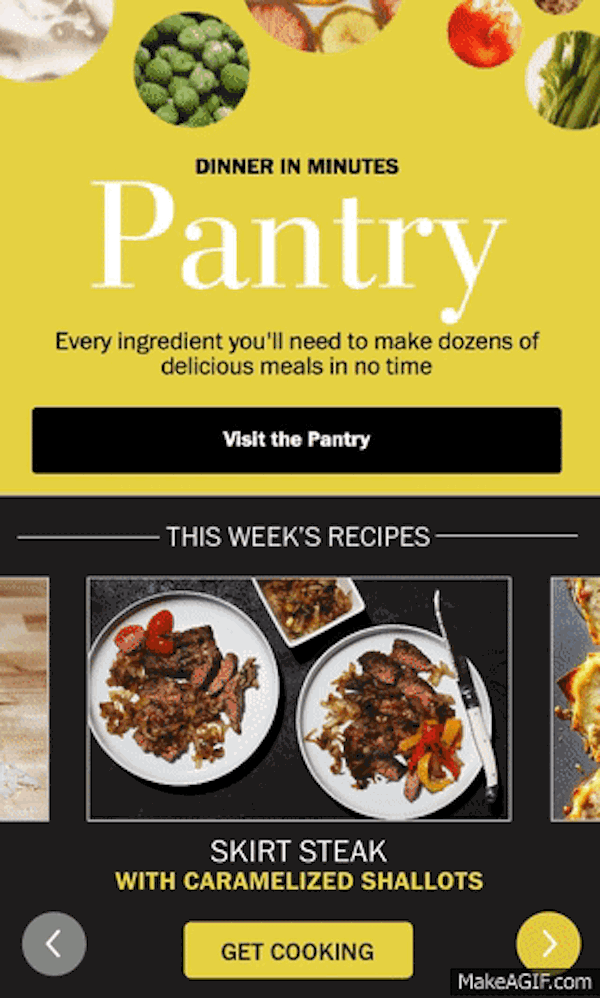Save 50% on a 3-month Digiday+ membership. Ends Dec 12.
When Jeff Bezos bought The Washington Post in 2013, he sought to bring a user-first approach to the legacy newspaper. Out of that came reductions in page load time and ads that load fast.
Today, the Post named Jeffrey Turner as head of ad product overseeing the Post’s Research, Experimentation and Development team, also known as RED. The Post created in 2015 to bridge editorial, advertising and technology, and to help counter rising ad-blocking rates. Turner said one of his goals would be products that offer some utility to the user, starting with a new product called Showcase. Turner spent 10 years at AOL and HuffPost, most recently as senior director of product at Oath, the Verizon unit that now includes AOL and HuffPost.
Showcase — as shown in the mockup below — is an event recommendation ad unit that combines an advertiser’s message with things like recipes and ticket sales. Designed with sports, entertainment and real estate advertisers in mind, the ad displays a feed of a venue’s upcoming events and a buy button that takes the user to the venue’s site.

“You hear users don’t like ads,” Turner said. “They respond very well to good ads, but it’s bad ads that are bringing down the industry. A brand doesn’t want a negative experience for a user. So it’s the value exchange we’re really after. RED’s done a great job initially around making light, fast-loading ads. Now, we’re thinking about how the user can engage and interact with the ad.”
Turner succeeds Jarrod Dicker, who left in February to lead a blockchain company, Poet. One difference is that Dicker oversaw ad ops and reported to CRO Jed Hartman; Turner won’t oversee ad ops and will report to Jason Tollestrup, vp of programmatic strategy and yield. Hartman said in separating the two, he wanted to send the message that RED was solely focused on creating the ads of the future.
“We want RED to have that sandbox, garage feel of having fun and developing product, and testing and listening to the marketplace and the brand studio, and ad ops is just different,” Hartman said.
The Post doesn’t release financials, but Hartman said he expects the Post to grow ad revenue in the double digits this year for the fourth year in a row, and RED plays a part by building ad products for the video and branded content divisions that are expected to power the Post’s ad revenue growth this year.
“RED is driving a good share of growth, by being embedded throughout the organization,” he said.
Since its inception, RED has rolled out 20 products such as customizable native ads and PostPulse, which shows readers a carousel of Post articles that the advertiser chooses. RED has also done work for the editorial side, like a pop-up called Re-Engage that suggests other stories to readers if it looks like they’ve stopped reading. The formats from the RED team become part of the Post’s Arc suite of publishing tools that it’s selling to other publishers.
Looking ahead, the pace of new product rollouts may slow down, as Turner said he’ll look for ways to introduce new ad products designed to have features that can be added on, like Showcase.
More in Media

Meta enters AI licensing fray, striking deals with People Inc., USA Today Co. and more
The platform has secured seven multi-year deals with publishers including CNN, Fox News, People Inc., USA Today Co to incorporate their content into its large language model (LLM) Llama.

European publishers say the Digital Omnibus ‘cookie fix’ leaves them worse off
The European Union’s attempt at a legislative spring clean for Europe’s web of data privacy rules, has landed flat with publishers.

Digiday+ Research Subscription Index 2025: Subscription strategies from Bloomberg, The New York Times, Vox and others
Digiday’s third annual Subscription Index examines and measures publishers’ subscription strategies to identify common approaches and key tactics among Bloomberg, The New York Times, Vox and others.





